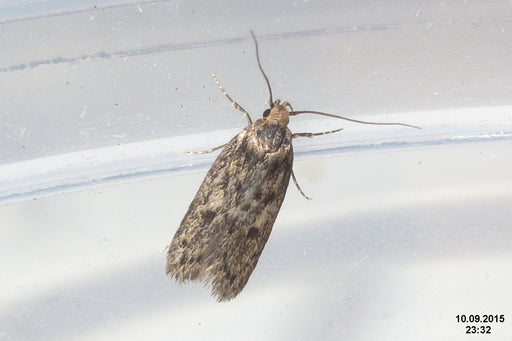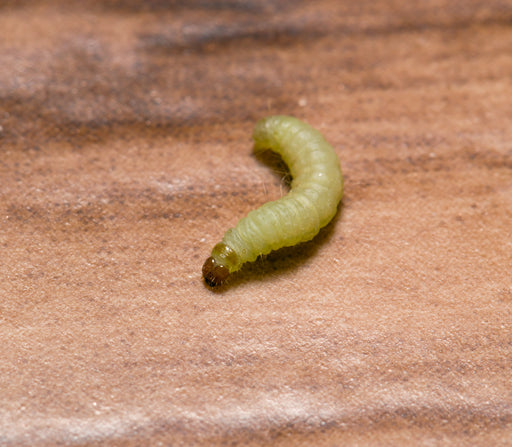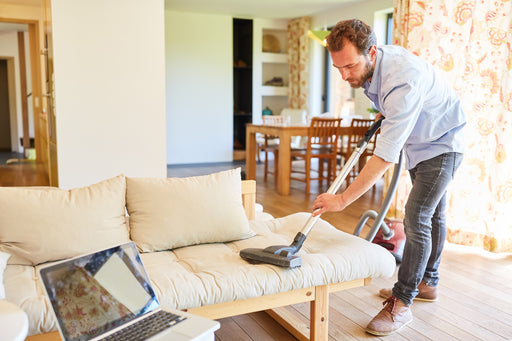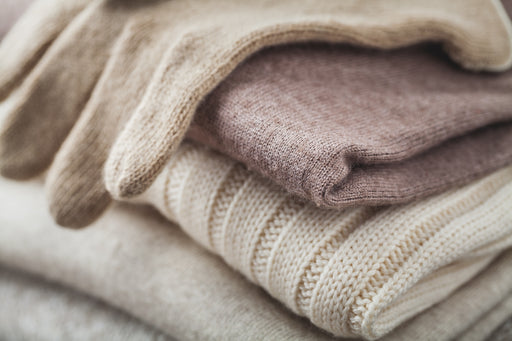The Brown House Moth - A Homeowners Guide
 David Short from Windsor, UK, CC BY 2.0, via Wikimedia Commons
David Short from Windsor, UK, CC BY 2.0, via Wikimedia Commons
It can be lovely to receive visitors, friends and family into your home. However, not all guests are welcome! Then there’s that house guest who just doesn’t get the message and is reluctant to leave. This is definitely the case when you discover a swarm of Brown House Moths. Although you might think your home is safe from the mayhem of moths, there are many varieties that can infiltrate your home without you noticing. The Brown House Moth is one of those pests you want to be vigilant about.
Do you think you might have Brown House Moths in your home? Then it’s time to learn more about this particular species and how to get rid of them.
About the Brown House Moth
The Brown House Moth (Hofmannophila Pseudospretella) is a common House Moth originally from Asia. In the 1840s, this moth was introduced to Europe, eventually spreading through the British Isles, and also into America. Brown House Moths are small and unassuming. Being that they prefer to cling to walls before it gets dark, you might not even know you have a moth problem until you find a dead one.
Brown House Moths are most active during the summer months, though you can find them throughout the year. Although they fall into the category of Pantry Moths you can generally locate Brown House Moths in residential homes in pantries, carpets and clothing, as well as attics, cabinets, roofing spaces, and lofts.
The larvae are omnivorous, meaning they’ll eat dried fruits, flour, grains, cereals, seeds, potatoes, fur, clothing, leather, cork, bookbinding, and similar items.
Brown House Moth Identification
Hofmannophila Pseudospretella has reddish-brown or brownish-gray coloring, along with patches of brown and black. The wings have spotting throughout that is darker than the main body color. Average wingspan ranges between 15-26 mm.
Brown House Moth larvae look like many other house moth larvae. They have dull, translucent white bodies and their heads are brown. Interestingly, depending on the food these larvae ingest, their coloring changes slightly. For instance, Brown House Moth larvae that feast on grains will have a different color than those eating a red wool sweater.

This can make the larvae even more elusive as they naturally “blend in” with their surroundings as they adopt the color of your favorite cashmere sweater.
These larvae tend to be around 6 mm in length.
Brown House Moth Life Cycle
The adult Brown House Moth has a lifespan of 4-5 months. Within that period, the female House Moth can lay up to 600 eggs. Depending on conditions, such as humidity and temperature, incubation can take anywhere from 8 to 110 days. This is a huge range in time after which, the eggs hatch.
Brown House Moth larvae are hungry from the minute the eggs hatch, and they’ll start eating whatever is closest to them. For the next 70 to 150 days, the larvae feast on their preferred food sources of cereals, grains, fur, leather and other natural fibers, all depending on what is nearby. In order to pupate, Brown House Moth larvae require a high amount of humidity, around 80%. Otherwise, they won’t continue with their development.
Getting Rid of Brown House Moths
Since Brown House Moths are more destructive than other types of House Moths, learning how to remove them from your home is important. MothPrevention Clothes Moth Traps—a specially formulated pheromone moth trap— can be used to attract mature adult male Brown House Moths. With the adult males removed from your home, the eggs laid by the females won’t be fertilized, putting a pause on the moth life cycle.
While Moth Traps alone aren’t going to entirely eliminate the moth problem in your home, they’re extremely useful when it comes to monitoring the level of the infestation.
Furthermore, Brown House moth control measures are dependent on where in your home you’ve discovered the infestation. If in the pantry, you’ll need to decontaminate the area. We recommend reading our Pantry Moth Kit Guide for details on how to do this.
Decontamination includes washing clothes, throwing out any contaminated food, and thoroughly washing surfaces with a vinegar solution. It’s good practice to vacuum affected areas too, in order to get rid of any frass.

Say Goodbye to Your Moth Problem
There you have it, you now know more about Brown House Moths than you ever imagined you would. As a result, you’re far better placed to rid the family home of these destructive beasts. If you see a moth and can identify it as a Brown House Moth, you should act fast and start deploying countermeasures immediately.
If you’re already in the middle of an infestation, don’t wait another day to start ordering Moth Traps to reclaim your home and get yourself moth free.
FAQs
How to get rid of Brown House Moths?
If you are trying to deal with a Brown House Moth infestation, the first thing you need to do is clean the affected area. Getting rid of damaged clothing and food, will help halt the destruction. From there, you need to use a pesticide, especially if the infestation is out of control.
After a thorough cleaning, dispose of infested items, vacuum rooms paying special attention to any dark corners, undisturbed areas, and under furniture. Postion Moth Traps which will help you monitor how many moths are in your home and break the breeding cycle. If the catch rate does not decline over time refer to our Pantry Moth Kit Guide for further recommendations.
Are Brown House Moths harmful?
Adult Brown House Moths are not harmful to people. They don’t have mouths, and therefore they cannot bite or feed. Brown House Moth larvae are responsible for the destruction and contamination of textiles—like wool and fur—as well as foodstuffs.
Do Brown House Moths bite?
No. They don’t have mouths. The sole purpose of an adult Brown House Moth is to find a place to either lay eggs or to fertilize those eggs. Once that happens, adult House Moths die. You also don’t have to worry about the larvae biting you. That said, moth larvae eat other things, such as stored food and dried goods, and clothing made from protein-based fibers in your closet.

About MothPrevention
MothPrevention® speak to customers every day about their clothes moth issues - clothes moths are a species that are ever increasing and that can cause significant damage to clothes, carpets and other home textiles.
To date, we’ve helped over 250,000 customers deal with their moth problems. We have developed professional grade solutions including proprietary pheromones and trap design, not available from anybody else in the USA.





